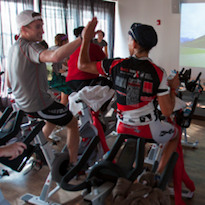In part 1 of our continuing series on how to incorporate longer intervals, I discussed why these intervals are so important for indoor cycling students and gave six reasons you should teach your class to love these longer efforts, especially if they are used to short, high-intensity intervals of less than 3 minutes. In part 2 we’ll look at one of the prime reasons longer intervals are so crucial—preparing for FTP testing. I discuss the different kinds of FTP testing, who should and should not take part in the 20-minute test, and what to do instead. In part 3, we’ll get more specific and look at how to program longer intervals into your classes to prepare riders for the rigors of a field test. Then in part 4, I’ll give you music and coaching suggestions for longer intervals.
We will then move on to a series devoted to the specifics of conducting the actual 20-minute FTP test.
If you teach with power, or if you plan on teaching with power (as bikes with power meters become more ubiquitous in cycling studios and gyms), you will need to know how to conduct assessments to determine FTP.
FTP stands for “functional threshold power,” which is commonly defined as the highest average power you can sustain for an hour, measured in watts. FTP is used to determine training zones when using a power meter. It allows you to objectively measure improvement over time in ways that no other method can. Most other methods are either too subjective and/or there are too many external factors that can affect the results, such as heart rate fluctuations.

